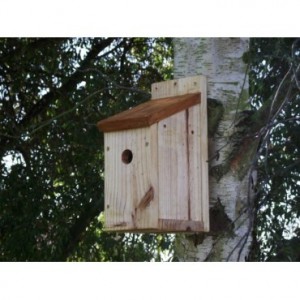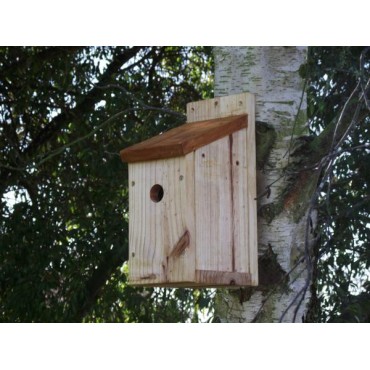Cleaning nest-boxes
The nests of most birds harbor fleas and other parasites, which remain to infest young birds that hatch the following year. We recommend that old nests be removed in the autumn, from Late April onwards once the birds have stopped using the box.
Maintaining your box
Use boiling water to kill any remaining parasites, and let the box dry out thoroughly before replacing the lid. Insecticides and flea powders must not be used.
To maintain the exterior of your nest-box an application of linseed oil applied once a year will help preserve your nesting box for many years to come.
If you place a small handful of clean hay or wood shavings (not straw) in the box once it is thoroughly dry after cleaning, small mammals may hibernate there, or birds may use it as a roost site.
It is quite normal for a few eggs to fail to hatch, or for some young to die. . Cold weather and food shortage may lead to nest desertion, or to only the strongest young surviving. The death of one parent or interference from animals or humans may also cause desertion.
Enjoy!
Avoid inspecting nest-boxes in use, however tempting it may be to take a peek! Simply watch and enjoy from a distance. Only open it up if you’ve got appropriate skills and experience and are taking part in a monitoring project .If you want to see the chicks as they grow, you could consider installing a nest-box camera before the breeding season starts.





